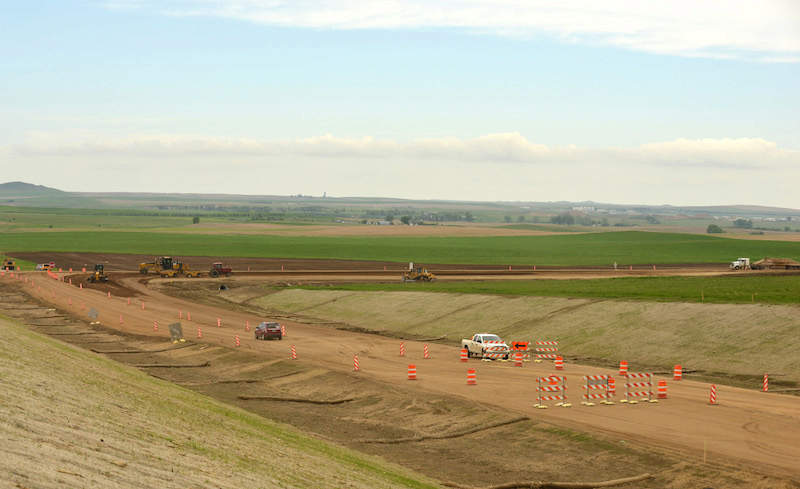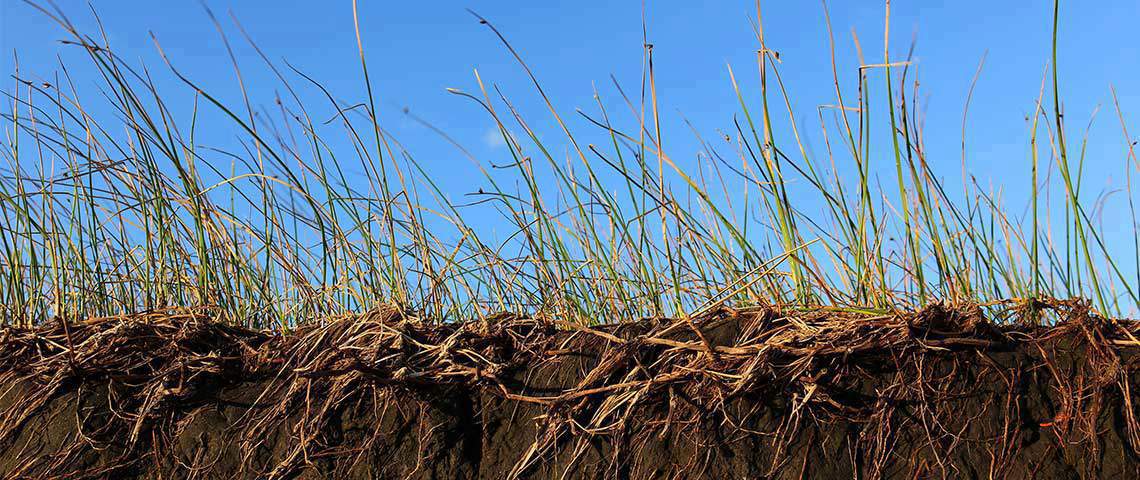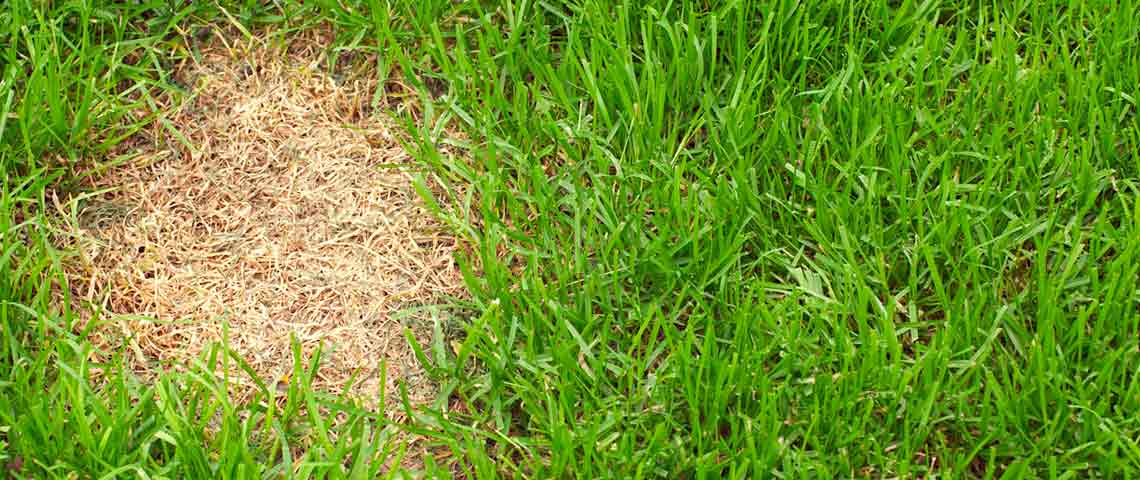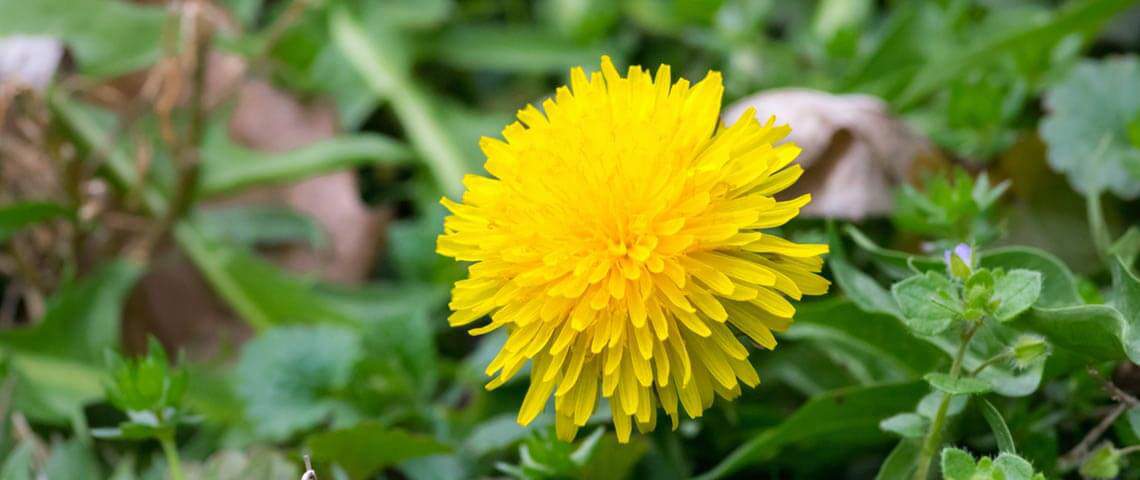How to Prevent Seed and Soil Erosion on Slopes and Hills
One of the most efficient and cost-effective ways to control erosion is with healthy, dense grasses. Planting grass seed on slopes and hills isn't difficult when you have the right seed for the job and know how to hold grass in place where it's planted. Just choose the right grass seed, and follow these simple steps to prevent erosion:
- Prepare and plant your slope or hill.
- Use mats to stabilize and protect seed.
- Water the matted area regularly.
- Mow and maintain your slopes and hills.
Choosing Your Seed
For gentle slopes and mowable hillsides in your lawn, you can choose your seed just as you would for any other lawn seeding project. Choose a grass that's appropriate for your region's climate and your lawn's unique conditions. Naturally deep-rooted grasses that establish quickly, such as turf-type tall fescue grasses, are excellent choices for erosion-prone spots. Fast-germinating annual and perennial ryegrasses help stabilize slopes quickly and control erosion while deeper rooted grasses become established and take hold.
With purebred, premium Pennington Smart Seed grasses, you get the benefits of Pennington's industry-leading research and Penkote seed technology, which helps seed grow healthier and establish faster during the early growth period when grass is most susceptible to disease and erosion. Once established, drought-tolerant Smart Seed grasses require up to 30 percent less water compared to ordinary grasses year after year, so your lawn conserves water while protecting against erosion from wind and water.
For extreme, erosion-prone slopes, especially those too steep to mow or maintain, products specifically designed for erosion control provide the solution. Available in region-appropriate mixes, Pennington Smart Seed Clover & Grass Mix combines durable, aggressive groundcovers such as white clover with turf-type tall fescue grasses for highly effective control and beautiful green color.
Properly planted, Smart Seed Clover & Grass Mix establishes quickly to stabilize your slopes with greenery and prevent erosion with little follow-up maintenance. Seed and soil stays where it belongs — on your property, not in your neighbor's or down the street.

Traditional, non-biodegradable erosion nets often end up wrapped around mower blades.
Holding Seed in Place
Most erosion-related seed and soil loss happens when rainfall comes before grass roots get established to hold soil in place. Without strong, deep roots, unprotected seed can easily wash away along with surrounding soil. With netless, biodegradable Pennington Seed Starter Mats, seed stays put where you plant it. With mats and quality seed, purchased separately, you can establish grass on hills and slopes with four simple steps:
1. Prepare and plant your slope or hill:
Prepare your soil just as you would to plant grass seed in other parts of your lawn. Spread your seed according to the rate on the seed package. Then apply a lawn fertilizer such as Pennington Full Season Lawn Fertilizer 32-0-5 to revitalize your soil with essential nutrients and promote vigorous growth as well as rich green color.

Heavy rainfall takes unprotected soil and seed along as erosion occurs.
2. Use mats to stabilize and protect seed:
At 39 inches wide and 18 feet long, Seed Starter Mats suit large or small areas. The mats cut easily with sharp scissors so you can fit the precise area involved. Use landscape staples, available at garden and hardware stores, to secure the mat to the seeded soil every 5 to 7 inches. Seed Starter Mats help prevent weeds, so seed gets started free from weed competition. They also keep you free of the mess and cleanup of straw and traditional netted mats.
3. Water the matted area regularly:
Once watered, the natural wood fibers in Pennington Seed Starter Mats help keep seed moist for better germination. Continue to water your matted area once or twice per day, as needed, to keep soil moist as seed germinates and grass emerges. Pennington Seed Starter Mats degrade naturally, so there's no need to remove them later on. Mats stay in place, so seed and soil does the same as grass grows and becomes established.

Professional erosion control products also work on backyard hills.
4. Mow and maintain your slopes and hills:
For mowable areas, follow good mowing practices and cut no more than one-third of the grass height when you mow. With Pennington's Seed Starter Mats, you can mow right over the area. The netless mat won't tangle in your mower or trap unsuspecting animals the way that common netted mats can. For steeper, non-maintained slopes, you can skip the mowing and just enjoy your stabilized, erosion-free slope instead.
As an industry leader for more than three generations, Pennington has earned its place as a valued partner to home owners, lawn professionals and professional erosion control specialists worldwide. You can count on Pennington for the finest in seed and lawn care products to help you control erosion, keep soil and seed where they belong, and create a thick, beautiful, enjoyable lawn.
Pennington, Seed Starter Mat, Smart Seed are trademarks of Pennington Seed, Inc.
Sources:
- Whiting, D., R. Tolan, B. Mecham and M. Bauer, "Water-Wise Gardening: Creating Practical Turfgrass Areas," Colorado State University, December 2003.




